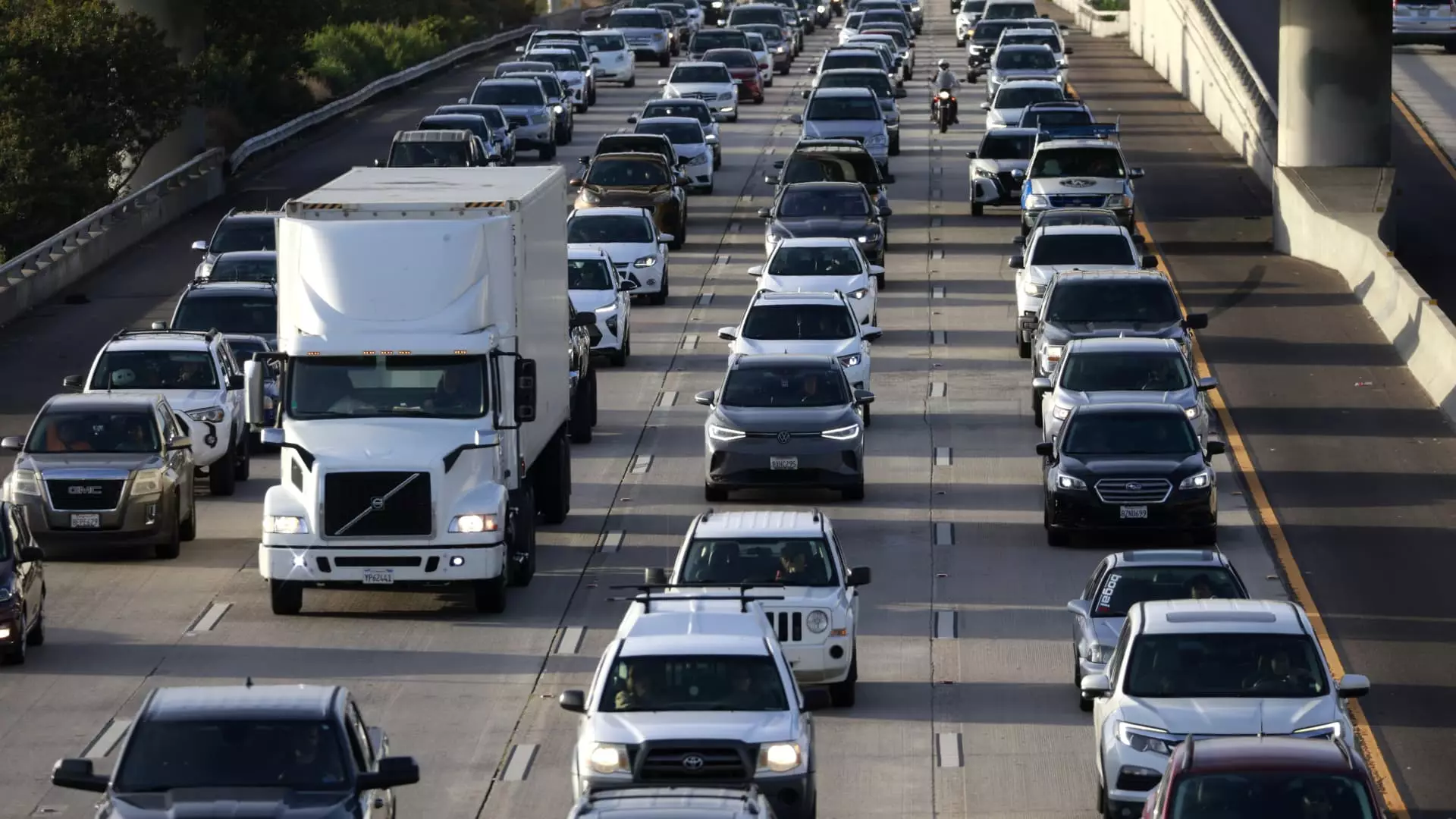In recent years, there has been a resurgence in the appreciation for the “nine-to-five” work aesthetic, affectionately termed as “corpcore.” This trend highlights a return to more formal and work-appropriate attire, such as tailored suits, blazers, and pencil skirts. However, despite the renewed interest in dressing for the office, research indicates that the traditional 40-hour workweek is becoming a thing of the past, especially when it comes to commuting patterns.
According to the 2023 Global Traffic Scorecard released by INRIX Inc., a traffic-data analysis firm, the standard American 9-to-5 workday has shifted to a 10-to-4 schedule. This change is attributed to the increasing prevalence of flexible working arrangements, leading to a decrease in early morning commuting trips and a rise in midday trips. The report from INRIX revealed the emergence of a “midday rush hour,” with nearly as many trips to and from the office taking place at noon as there are at 5 p.m. Transportation analyst Bob Pishue described this shift as the “new normal.”
Another significant change in commuting behavior is the decline in the use of public transportation. Data from the Federal Reserve Bank of St. Louis shows a sharp drop in ridership during the pandemic, with minimal recovery thereafter. This shift has resulted in increased traffic congestion during peak midday and evening hours, as commuters opt for personal vehicles over public transit.
Pishue noted that the pre-Covid traffic patterns, characterized by morning and evening rush hours, have been replaced by sustained traffic volumes throughout the day. This change underscores the impact of remote work flexibility on commuting habits and congestion levels in urban areas.
As employees adapt to hybrid work models and remote options, a new phenomenon known as “coffee badging” has emerged. This practice involves employees spending minimal hours in the office, often leaving early or arriving late, and attending only essential meetings. While some organizations have embraced this flexibility, others view it as a compromise that undermines traditional work expectations.
Research from Owl Labs indicates that 58% of hybrid employees engage in coffee badging, highlighting a shift towards prioritizing flexibility and work-life balance over strict office attendance. However, experts like Lynda Gratton caution against overreliance on coffee badging, as it may lead to reduced productivity and disengagement among employees.
Employee burnout and disengagement have become pressing concerns for organizations grappling with changing work norms. Despite efforts to promote workplace engagement, recent polls reveal that only one-third of employees feel engaged in their work and workplace. The rise of “quiet quitting,” where employees disengage without overtly leaving their jobs, poses a significant threat to productivity and organizational morale.
Gallup’s 2023 poll underscores the economic impact of disengaged employees, amounting to approximately $1.9 trillion in lost productivity nationwide. Workers are increasingly prioritizing work-life balance, mental health support, and flexible hours over conventional career advancement, signaling a broader shift in workplace values and expectations.
In light of these challenges, experts emphasize the need for organizations to reevaluate their approach to work design and employee engagement. By focusing on productivity, well-being, and meaningful work experiences, companies can adapt to the changing landscape of the modern workday and foster a more engaged and satisfied workforce.

Leave a Reply